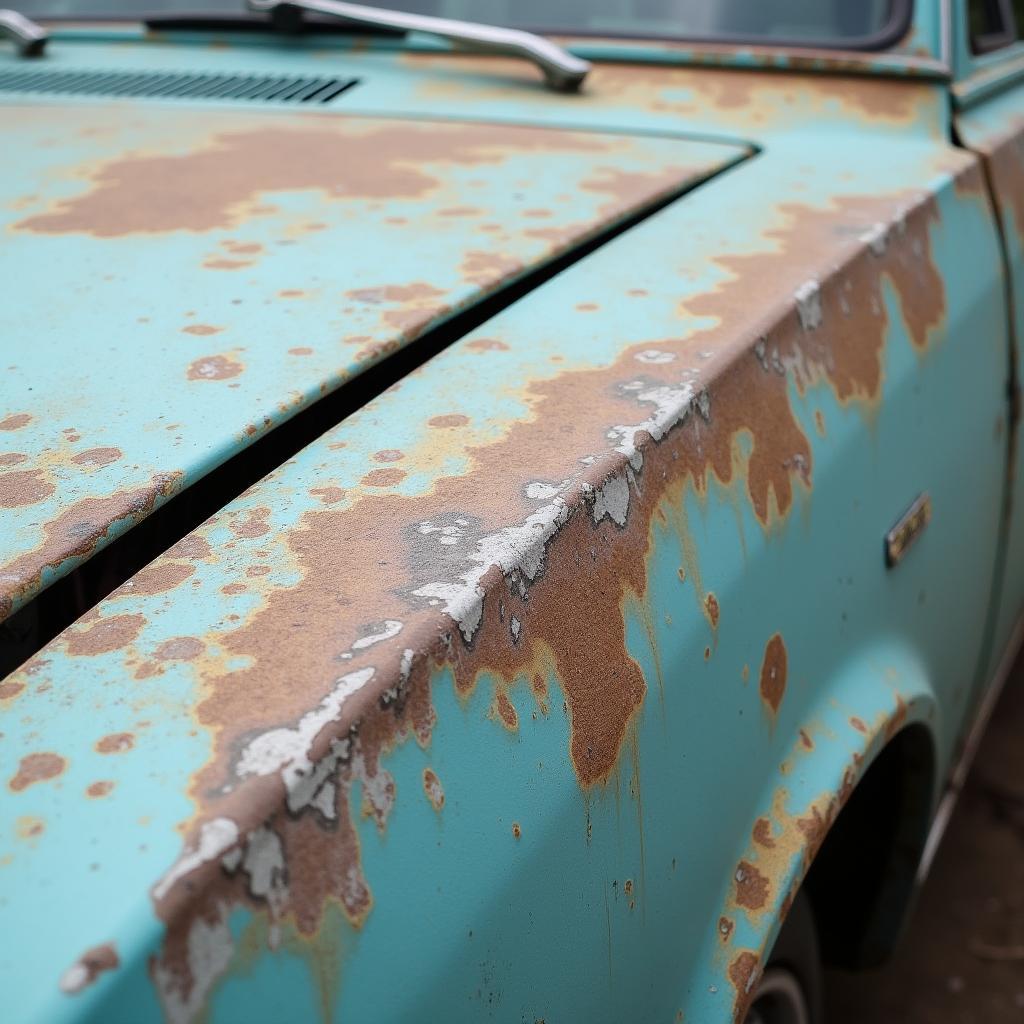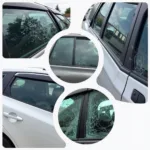Having a shiny, vibrant car paint is a point of pride for many car owners. But over time, exposure to the elements can cause your car’s paint to fade, making it look dull and lackluster. The good news is that you don’t have to live with faded car paint. This comprehensive guide will delve into the causes of car paint fade and provide you with practical steps on how to repair it, restoring your car’s former glory.
What Causes Car Paint to Fade?
Before we dive into the repair process, it’s essential to understand what causes car paint to fade in the first place. This knowledge will help you take preventive measures in the future.
- UV Radiation: Prolonged exposure to the sun’s ultraviolet (UV) rays is a primary culprit behind faded car paint. UV rays break down the chemical bonds in the paint, causing it to lose its color and shine.
- Oxidation: When your car’s paint is exposed to air and moisture, a chemical reaction known as oxidation occurs. This process leads to the formation of a chalky layer on the paint’s surface, making it appear dull and faded.
- Acid Rain: Acid rain, formed from pollutants in the atmosphere, can etch and damage your car’s paint, contributing to fading and discoloration.
- Bird Droppings and Tree Sap: Bird droppings and tree sap are acidic and can eat away at your car’s clear coat, leaving behind blemishes and faded spots if not removed promptly.
- Harsh Chemicals: Using harsh chemicals or abrasive cleaners on your car’s paint can strip away its protective layers, making it more susceptible to fading.
- Improper Washing Techniques: Frequent washing with dish soap or using abrasive sponges can also damage the clear coat and lead to paint fade.
Assessing the Damage: Is it Fade or Clear Coat Failure?
It’s important to differentiate between faded paint and clear coat failure because they require different approaches for repair.
- Faded Paint: Faded paint typically appears dull and lackluster, but the surface is still smooth to the touch.
- Clear Coat Failure: Clear coat failure often manifests as peeling, cracking, or flaking of the paint’s top layer.
If you’re unsure about the extent of the damage, it’s always a good idea to consult with a professional car detailer or auto body shop for an accurate assessment.
How to Repair Faded Car Paint
Repairing faded car paint can range from simple DIY methods to more involved procedures depending on the severity of the damage.
1. Washing and Decontamination
- Wash Thoroughly: Begin by washing your car thoroughly using a pH-neutral car wash soap and a microfiber wash mitt. This removes loose dirt, grime, and contaminants.
- Clay Bar Treatment: Use a clay bar to remove embedded contaminants that regular washing can’t eliminate. This step will leave your car’s surface feeling smooth and ready for the next steps.
2. Polishing to Restore Shine
- Choose the Right Polish: Opt for a polishing compound or a dual-action cleaner polish specifically designed for faded paint.
- Apply with a Polisher: Use a dual-action polisher or a rotary polisher (for experienced users) with a soft polishing pad. Work in small sections, applying even pressure.
- Hand Polishing: If you don’t have a polisher, you can polish by hand using a microfiber cloth. However, this method is more time-consuming and may not yield the same level of correction as a machine polish.
3. Waxing for Protection
- Apply Wax: After polishing, protect your car’s paint by applying a high-quality car wax or sealant. This creates a protective barrier against UV rays, contaminants, and future fading.
- Regular Waxing: To maintain the shine and protection, wax your car every three to six months, depending on your climate and driving conditions.
Can You Repair Faded Car Paint Yourself?
Yes, repairing faded car paint is achievable for DIY enthusiasts, especially if the fading is minor. However, for severe cases or if you’re uncomfortable with the process, it’s best to seek professional help.
“Remember, proper preparation is key to achieving satisfactory results when repairing faded car paint,” advises John Smith, an experienced auto detailer at ABC Auto Detailing. “Take your time, follow the instructions carefully, and don’t hesitate to consult with a professional if needed.”
How Much Does it Cost to Fix Faded Car Paint?
The cost to fix faded car paint can vary significantly depending on the severity of the damage, the size of your car, your location, and whether you choose to DIY or hire a professional. Here’s a general estimate:
- DIY: $50 – $150 (for materials like car wash soap, clay bar, polish, and wax)
- Professional Detailing: $100 – $300 (for a basic paint correction detail)
- Professional Repaint: $500 – $5,000+ (for a complete repaint, depending on the number of coats and the paint quality)
Preventative Measures: Keeping Your Car Paint Vibrant
Prevention is always better than cure. Here are some tips to prevent car paint fade and keep your car looking its best:
- Park in the Shade: Whenever possible, park your car in a garage or under a shaded area to minimize UV exposure.
- Regular Washing: Wash your car regularly to remove contaminants like bird droppings, tree sap, and dirt that can damage the paint.
- Waxing and Sealing: Apply a layer of wax or sealant every few months to create a protective barrier against the elements.
- Use a Car Cover: Consider using a car cover if you park your car outside for extended periods or live in an area with harsh weather conditions.
Conclusion
Faded car paint is a common problem, but it’s not something you have to live with. By understanding the causes of paint fade and following the steps outlined in this guide, you can restore your car’s paint to its former glory. Remember, prevention is key to maintaining a vibrant shine, so incorporate protective measures into your car care routine.
If you’re not comfortable tackling the repair yourself or the damage is extensive, don’t hesitate to consult with a professional car detailer or auto body shop. They have the expertise and equipment to handle more complex paint correction procedures and can advise you on the best course of action. By taking proactive steps, you can keep your car looking its best for years to come.



